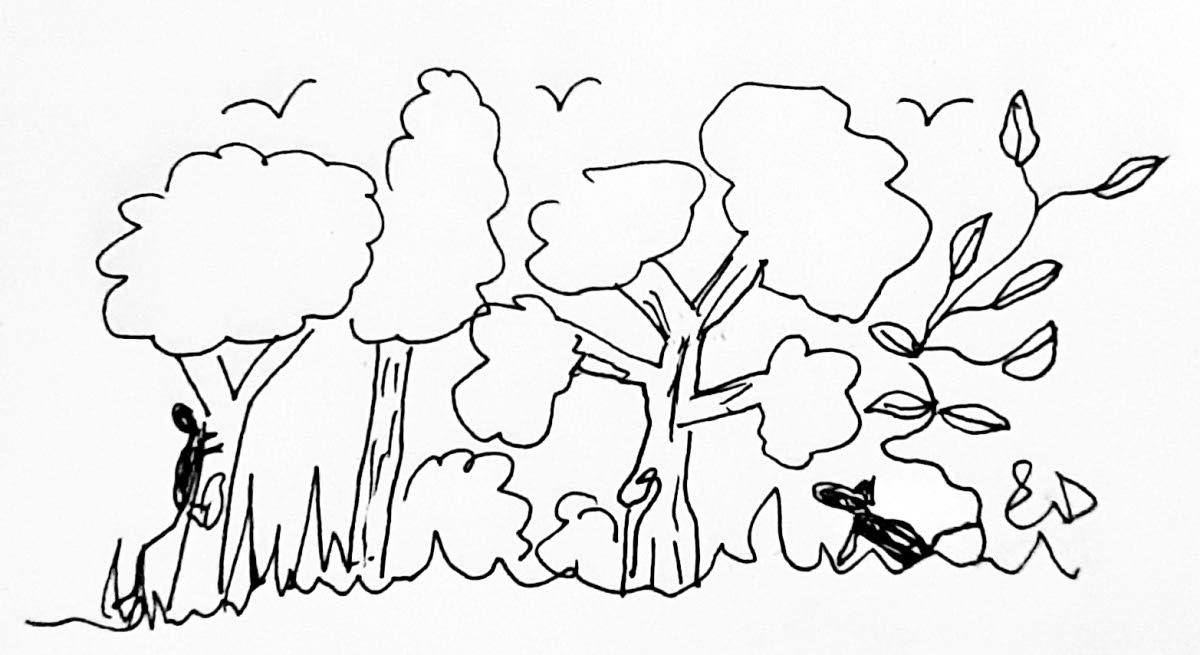National chromotherapy

On the visible spectrum, green, blue, indigo and violet are known as "cool" colours, imparting peace and calm when viewed. In contrast, the three "warm" colours (red, orange, yellow) have a stimulating effect on the psyche.
In colour therapy (also known as chromotherapy), green is traditionally considered as having healing, balancing, harmonising qualities and is used by therapists to help reduce effects of stress and trauma, and can be used to balance clients at the end of treatments.
Spiritually speaking, the colour green relates to the heart chakra, which influences our ability to give and receive love, show compassion, acceptance, forgiveness, empathy – and other related attributes.
Given that the colour green represents and resonates with so many beneficial and healing aspects of life, what does it say (in the modern pursuit of "progress" and "development") when "developers" seem increasingly intent on removing this prolific, life-enhancing natural colour from our national landscape...to replace it with the heavy, tombstone-like hues of concrete?
Recently two Dutch visitors volunteered to take two of my homeless canine rescues on a walk. As we all strolled through a quiet residential area, I asked them what they liked most about Tobago. Their immediate response was that they loved the abundance of wild green foliage, in contrast to Holland, where green spaces are generally "man-made" and manicured – not growing wild and free like Tobago's bushes and trees.
Especially in the rainy season, visitors to Trinidad and Tobago often comment on the lush greenery – something that can easily be taken for granted until someone from elsewhere raves about its abundance. Those of us who do notice and enjoy the greenery are also more likely to notice the destruction of it, as the same wild bushes and trees the Dutch visitors admired are increasingly cleared in the name of "progress."
An ironic aspect of modern-day development is the naming of residential complexes that occupy once-verdant locations. For example, a forested expanse might be cleared to make way for a gated community called "Forest View" – which has absolutely no trees or even a view of them. Quite like a name on a tombstone, the residential moniker records what once was alive in that forested space and serves to make the costly real estate sound exotic and alluring in brochures.
I once asked a man operating an excavator how he felt about clearing a verdant expanse. He told me that while it is his job, he cannot bear having to destroy and clear the large trees.
At least he had some level of empathy. Someone else working at that job might find the act of felling trees as pleasurable as indulging in a larger-than-life video game with extra-loud sound effects.
My current place of abode once felt like a verdant oasis, down a quiet track with large green trees and bush surrounding the few homes. In the grove of trees across from the house, agoutis, iguanas and hawks thrived and (unfortunately) also attracted hunters, both in and out of hunting season.
Regrettably, the latter was not anything on which the police cared to take action. Not surprising, considering that an officer once informed me that he does nothing about hunters, since “Ah love meh ‘guana!”
Over the past few months, we have witnessed quite a few of the trees on our lane being cleared and bush removed to make way for the concrete and dry, raw earth of "progress." Sometimes I leave home and go elsewhere, to avoid hearing the destruction of nature. For me, one of life's most heart-breaking sounds is the groaning and clanking of large machines and the subsequent loud cracks, groans and thuds as large, decades-old trees crash down like wooden Goliaths.
As the song Big Yellow Taxi (originally sung by Joni Mitchell) says:
"They took all the trees, and put ‘em in a tree museum
And they charged the people a dollar and a half to see them
No, no, no
Don't it always seem to go
That you don't know what you got 'til it's gone
They paved paradise, and put up a parking lot."
Especially on an island like Tobago. which strives to present an eco-tourism image, it is important not only to retain but to cultivate as much green as possible...so that our island's chromotherapeutic effects can inspire healing, balance and harmony – for the psyche of locals and visitors alike. What can a grey palette do for heart, mind, body and soul?



Comments
"National chromotherapy"